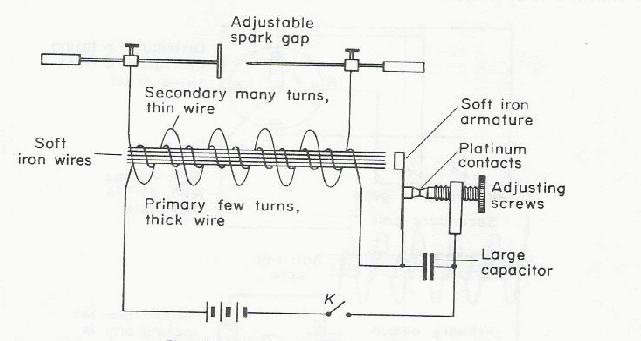An induction coil makes it possible to produce sparks using a low voltage battery and operates on the same principle as a transformer.

It has a primary coil consisting of a few turns of heavy wire wound on a core consisting of a bundle of soft iron wires. Around this is wound a secondary coil consisting of many thousands of turns of thin wire. The ends of the secondary coil are connected to the ends of an adjustable spark gap.
When the switch K is closed, current flows through the primary coil and magnetises the iron core. The soft iron armature is attracted and causes the platinum contacts to separate and break the circuit. When this happens the core becomes demagnetised and the armature is pulled back again by the spring on which it is mounted.
The process is repeated. The armature vibrates causing the primary circuit to be made and broken. Each time the primary circuit is broken the magnetic flux through the core collapses suddenly and a very large voltage is induced in the secondary because of the large number of turns. The voltage is large enough for force a spark to leap the spark gap.
Owing to the self inductance of the primary, a small arc tends to form along the platinum contacts every time they open and this makes them wear away. This is prevented using a large capacitor as shown.
Induction coils were used to investigate high voltages and electric discharge through gases, in morse code transmitters and X – ray tubes. The most important use was in the coil ignition system in car engines. They were used to produce the spark that ignited the air fuel mixture.
